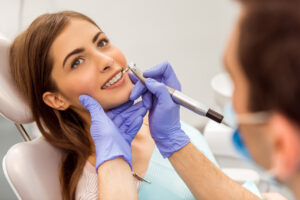How Do I Know If I Need Braces
Some people want a straighter smile but worry about how long the process will take. Invisalign in Issauah offers a clear, low-profile way to improve alignment, but timing depends on your case. The trays may look simple, but each one plays a role in steady, controlled movement. If you’re asking how long does braces take, this guide breaks down what affects your timeline and what to expect throughout your treatment.
Signs You May Need Braces
Orthodontic problems often show up early, though some go unnoticed until they begin to cause discomfort. Here are common signs that could mean you need braces in Issaquah.
Crowded Teeth
Teeth that overlap or sit too close together are hard to clean. Crowding increases your risk for cavities and gum disease. Braces create space and help your toothbrush and floss reach every surface.
Gaps Between Teeth
Spacing between teeth may cause speech issues or food traps. Braces close these gaps and help the upper and lower arches work together better.
Overbite
An overbite happens when the top teeth extend far over the lower teeth. In some cases, this leads to jaw tension or biting the roof of your mouth.
Underbite
This issue makes the lower teeth stick out farther than the top teeth. It may cause discomfort when chewing and uneven tooth wear.
Crossbite
If your top teeth sit inside the bottom ones when biting down, this could be a crossbite. This often leads to gum problems or jaw discomfort over time.
Open Bite
An open bite means your top and bottom teeth do not meet when your mouth is closed. This condition affects chewing and speech and may be linked to thumb sucking or tongue thrusting.
Jaw Pain or Clicking
If your jaw pops, clicks, or feels tight while eating or talking, there may be alignment issues. Braces can correct how your jaw moves and relieve that pressure.
Difficulty Biting or Chewing
Some people feel their teeth don’t come together properly. This can make eating difficult and lead to uneven wear.
How an Orthodontist Diagnoses the Problem
An orthodontist checks your teeth, jaw, and bite through a series of evaluations. These tools help create an accurate treatment plan.
Visual Exam
The orthodontist studies how your teeth fit together and checks for visible crowding, gaps, or bite issues.
Digital Scans and X-Rays
These images give a clear view of roots, tooth positions, and jaw structure. They help diagnose hidden problems and guide the movement of your teeth.
Bite Impressions
3D models or digital impressions show how your teeth align when you bite. These are used to plan the direction and timing of your treatment.
Treatment Planning
Your orthodontist reviews the findings and recommends the right option. Braces, aligners, or other appliances may be used to improve alignment.
You can visit an orthodontist in Issaquah like Egger Orthodontics to get a clear diagnosis and treatment recommendation.
Benefits of Getting Braces Early
Early treatment can prevent serious problems later. Children should get their first orthodontic check-up around age seven. Even if they don’t need braces right away, the orthodontist can monitor growth and guide proper development.
For teens, braces help fix bite issues before jaw bones stop growing. Adults can also benefit from braces. Age is not a barrier to achieving better oral health.
Ignoring alignment issues may lead to:
-
Gum recession or inflammation
-
Tooth decay due to poor cleaning access
-
Jaw soreness or frequent headaches
-
Chipped or worn teeth from uneven contact
Treatment Options for Braces
Technology has made braces more comfortable and flexible. Patients now have several options depending on their needs and goals.
Metal Braces
These are the most common type of braces. They use brackets, wires, and elastics to move teeth. Modern metal braces are smaller and easier to clean than older designs.
Ceramic Braces
Ceramic braces work like metal ones but are made with clear or tooth-colored material. They blend in well with your smile and are popular among older teens and adults.
Invisalign
Clear aligners offer a removable, low-profile option for straightening teeth. Trays are custom made and switched every one to two weeks. Invisalign can correct mild to moderate alignment problems without wires or brackets.
Students and working adults often prefer Invisalign Teen in Issaquah because it lets them eat, brush, and speak with minimal changes to their routine.
How Long Does Braces Treatment Take?
Treatment time depends on the severity of the issue. Most people wear braces for 18 to 24 months. Some finish in as little as a year, while others may need longer.
Your orthodontist checks your progress regularly and adjusts the braces to move your teeth properly. Following care instructions and attending appointments helps avoid delays.
Keeping Your Smile Healthy During Treatment
Braces need extra care. Cleaning around wires and brackets prevents plaque buildup and tooth damage.
-
Brush after each meal with a soft toothbrush
-
Use floss threaders or water flossers daily
-
Avoid sticky or hard foods that can damage your brackets
-
Visit your dentist for cleanings every six months
After braces come off, wear your retainer as advised. Retainers keep your teeth in their new positions and prevent them from shifting back.
Why Choose Egger Orthodontics
Egger Orthodontics provides quality orthodontic care in Issaquah. Dr. Nadine Egger and Dr. Gabi Aragon offer personalized plans for children, teens, and adults. Their practice combines experience with the latest technology to help you get the smile you want.
We guide you through every step and offer treatment options like clear aligners and braces in Issaquah. Whether you have a mild alignment issue or a more complex bite problem, we’re ready to help.
Call or visit our Issaquah office to schedule your consultation. We make your comfort and progress a priority.
FAQs
What age is best for braces?
Most kids start treatment between ages 10 and 14. However, early check-ups around age seven help catch potential problems before they worsen.
Can adults get braces?
Yes. Many adults choose braces or Invisalign to fix bite issues or improve their smile. It’s never too late to start.
Are braces painful?
You may feel soreness after getting braces or following an adjustment. This usually fades in a few days.
How often will I visit the orthodontist?
Most patients return every 4 to 8 weeks for check-ups and adjustments. This keeps your treatment moving forward.
Do I need to wear a retainer after braces?
Yes. Wearing a retainer helps maintain your results and prevents your teeth from shifting back.




